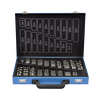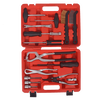Country information
Location
Canada is north of the USA and shares maritime borders with Greenland and
the French archipelago, Saint Pierre and Miquelon. It is the second-largest
country after Russia but has a sparse population of 38.5 million in 2022,
according to data from the United Nations.
Language
Both English and French are the official languages of Canada.
Wealth
According to
Statistics Canada, the average household net disposable income in 2020 was CAD 55,700 (USD
42,411). This is higher than the global average of USD 30,490, as per
statistics from
OECD Better Life Index.
The World Bank
placed Canada as the ninth wealthiest country in the world for 2021, with a
gross domestic product of USD 1.99 trillion.
Source of wealth
One of the largest economies globally, Canada earns its wealth from the
mining of gold, zinc, nickel, and copper, the production of oil and gas, and
impressive real estate and financial sectors.
Dropshipping in Canada
Here are the top reasons to start dropshipping in Canada:
Canada is the tenth largest ecommerce market
75% of the Canadian population are ecommerce users
Estimated USD 40.3 billion in Canadian ecommerce retail sales by 2025
Internet penetration rate of 96.5%
33.3 million Canadians are social media users
93.6% of Canadians use a smartphone
56% of Canadians shop on mobile devices
Electronics and media lead with the most number of sales
The ecommerce market
The International Trade Association
(ITA)
reported in 2022 that 75% of the Canadian population are digital shoppers.
This figure is expected to rise to around 77.6% by 2025. Such a sizeable
ecommerce market suggests room for niche dropshipping start-ups.
Ecommerce revenue
With a revenue of USD 35.5 billion in ecommerce sales for 2021, Canada was
listed as the tenth biggest market for ecommerce by
ecommerceDB. The growth rate is forecast to stay in line with the global average of
6%. Monthly ecommerce revenue has been USD 3 billion since the beginning
of 2022, according to
Statista.
Insider Intelligence
reports that retail ecommerce sales will grow by 15% in 2022 to reach USD
80 billion in revenue. This makes up 13.6% of the total retail sales in
Canada.
Internet use
As a powerful developed nation, Canada has an extremely high number of
internet users. A total of 36.89 million (96.5%) Canadians access the
internet as of February 2022 (
DataReportal). They spend an average of 6 hours 45 minutes per day online.
A
Statista
survey from April 2021 found that the largest segment of online buyers
(33%) were millennials aged 27-40 years old, followed by boomers (30%)
aged 65-75.
Product categories with high sales
The annual spend by Canadians online for each category of consumer goods
as per
DataReportal
, 2022:
Electronics (USD 14.72 billion)
Fashion (USD 14.25 billion)
Furniture (USD 7.80 billion)
Personal and household care (USD 6.15 billion)
Toys, hobbies, and DIY (USD 4.20 billion)
Physical media (USD 2.69 billion)
Beverages (USD 1.17 billion)
Food (USD 1.12 billion)
The same report highlights that 51.1% of Canadian internet users purchase
a product online every week.
Use of smartphones
Canada has an extremely high smartphone penetration rate of 93.6% as of
2022, says
DataReportal. It is found that there is a marginally higher number of Canadians that
access the internet with smartphones (86.5%) rather than desktops (84.3%).
A survey by
Statista of 2,034 Canadians in 2022 found that 56% said they used a smartphone
when asked which device they use for online shopping.
Competition
The top five biggest players in Canada's ecommerce market in 2022, as per
Ecommerce Guide:
Amazon Canada (160.45 million visitors per month)
Kijiji (55.81 million visitors per month)
Walmart Canada (33 million visitors per month)
eBay Canada (28.22 million visitors per month)
Best Buy Canada (31.96 million visitors per month)
Although these are the largest kingpins for ecommerce, it's not to say
there isn't room for smaller players to gain from a highly targeted
segment. It has been noted that Canada was relatively slow to adopt
ecommerce compared to other countries such as the US. As such, it might be
easier to find gaps in the market.
Delivery expectations
The main driver for Canadians to make an online purchase is free delivery,
as found by
DataReportal, 2022. As many as 68.7% of internet users aged 18-64 said that this was
the biggest draw for placing an order with a website.
Next-day delivery was mentioned by 32.6% of Canadians as also being a push
for them to buy.
Logistics network
The terrain in Canada is mostly plains with mountains in the west. As 90%
of the Canadian population live within 160km of the US border and
industries are concentrated in the southeast, transportation has few
difficulties.
Freight transportation by road is the most common way to move goods
between businesses and consumers. An extensive network of roads, highways,
and railways creates a reliable infrastructure, according to the
Government of Canada.
Summary
Ecommerce is growing rapidly in Canada with opportunities for dropshippers
to set up a successful business. Offering services such as free delivery,
discounts, and goods not provided by the big ecommerce players, there is
potential to make a good profit.








































